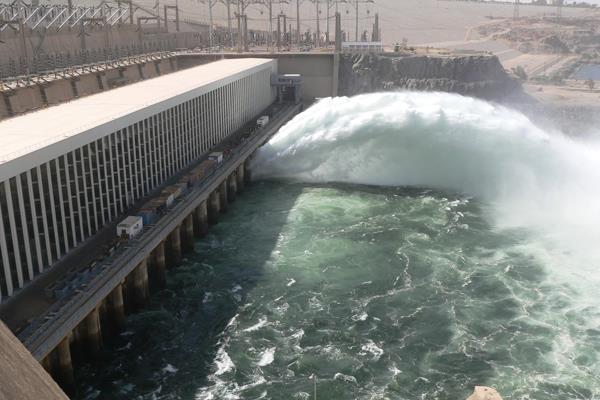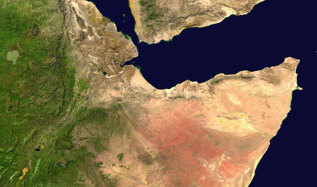PBS: Escaping Eritrea … [Read More...] about ካብ ውሽጢ ቤት ማእሰርታት ኤርትራ
A slight effect
Doaa El-Bey | 1 September, 2016 | Al-Ahram
The floods in Ethiopia can slightly reduce the filling of the reservoir of the Renaissance Dam, at least this year, reports Doaa El-Bey

Up until now, floods in Ethiopia are average or slightly above average. However, such talk is premature before the end of the flood season, Nader Noureddin, a professor of agricultural resources at Cairo University, said, describing the floods that hit Ethiopia last month.
“We have passed through nine years of drought that depleted the water reserve in Lake Nasser. However, this year’s flooding can compensate what we lost, but it will not fill Lake Nasser or help in opening Toshka Lakes. We can say that it will compensate three of the nine years of drought,” Noureddin told Al-Ahram Weekly.
A source in the Ministry of Irrigation said that the level of water in the Blue Nile is the highest in years and that it is double last year’s level.
However, the source pointed that these are just initial indications and that more accurate levels should be measured at the end of the flooding season in September.
The positive impact of the floods is starting to show in the rise of the water level in Lake Nasser that has recently seen a noticeable ebb.
Official reports said that the rise in water — unprecedented in the last 100 years — was due to the heavy rain that both Ethiopia and Sudan saw this year.
However, in the meantime, Noureddin explained the impact of the Sudan floods is minimal on Egypt because their effect is just like that of internal floods in Egypt. “Like that of last year’s floods in the Delta area, or like the Sinai floods,” he added.
Egypt’s former minister of irrigation Mohamed Nasreddin Allam agreed with Noureddin. Sudan floods can have a devastating but internal effect just like the Sinai floods in Egypt, Allam explained. Their effect on Egypt is limited and thus cannot definitely compensate previous years of low water levels.
Last month’s floods in Sudan left thousands of houses destroyed, several villages submerged and 100 people killed across the country. This year’s floods are reportedly the worst since 1998.
While the rise in water levels in Lake Nasser is obvious, the last few years of drought in addition to the possible impact of the Renaissance Dam especially in the next few years — when Ethiopia will fill the dam’s reservoir — have shed light on the importance of rationalising water.
The Ministry of Irrigation has launched a new campaign to rationalise water usage. It asked citizens, farmers in particular, to reduce their water consumption as much as possible.
It is currently preparing a new irrigation and wastewater bill that will be submitted to parliament. The bill is likely to put stricter penalties on water waste either in cultivation or daily household use and arrange for supplying coastal governorates with desalinated water.
The Blue Nile accounts for more than 80 per cent of the Nile’s water that flows through Egypt. Every year, Ethiopia experiences rain storms from June to mid-September. The rain raises the level of the Blue Nile River, and is then carried thousands of kilometres along the Nile through Sudan and Egypt. Egypt depends on the Nile water for 95 per cent of its water needs.
Thus, building the Renaissance Dam on the Blue Nile near the Ethiopian-Sudanese border has been a cause of controversy between Cairo and Addis Ababa.
Negotiations between the two countries on the impact of the dam have recently failed to reap any fruits although news about a possible breakthrough were repeatedly circulated during the last few months.
Although there were reports about a meeting from 5-6 September to sign contracts with consultancy firms in Khartoum, Sudan has not confirmed the date. Statements appear now and then saying the three parties Egypt, Sudan and Ethiopia have yet to agree on various technical matters before signing.
The meeting is supposed to see the long awaited signing of the contract with two French consultancy firms BRL and Artelia that are supposed to hold studies about the impact of the dam.
The three states are also supposed to discuss the operating process of the dam and the number of years it will take to fill the reservoir.
Egypt needs to negotiate with Ethiopia on increasing the years needed to fill the dam, set to be from five to seven years by Ethiopia. That period will reduce Egypt’s share of water from 12 to 25 per cent while more years will minimise the effects from the dam’s filling. Egypt wants to increase them to 10 or 12 years.
Egypt will definitely face water shortages during the years in which the dam will be filled, explains Noureddin. “So let’s hope that Addis Ababa will fill it up during the flood years. If Ethiopia starts the initial filling this year in October as planned, then there will be no problem. However, we need to worry about the coming years, especially if we face a drought similar to the nine previous years,” he added.
The two French firms sent their offers to the three countries in January in order to review them ahead of the tripartite meeting scheduled to be held the following month.
The firms are supposed to conduct two studies, one on the effects of the dam on the water flow to Egypt and Sudan and the other on the environmental, economic and social impact of the dam. The studies are expected to take nine to 12 months to be concluded.
“However, what is more important at this point is to reach an agreement with Ethiopia according to which Addis Ababa will guarantee an amount of daily or yearly supply that will not reduce our yearly water quota,” Noureddin said.
Signing the contract with the two consultancy firms was planned according to the road map drawn up by the Khartoum agreement. It was signed in December last year following several rounds of arduous negotiations conducted by the ministers and water resources officials from the three countries.
The political track which is supposed to go hand in hand with the technical track, does not seem to be moving smoothly.
In July, Egypt participated in the African Union (AU) summit in the Rwandan capital Kigali and in the Nile Basin Initiative (NBI) meeting in Uganda.
Ways to boost the technical track was brought up in Kigali. On the sidelines of the summit, President Abdel-Fatah Al-Sisi met Ethiopian Prime Minister Hailemariam Desalegn to discuss the issue as well as ways to boost bilateral relations between Cairo and Addis Ababa and to enhance peace and security in Africa.
Egypt’s participation in the NBI meeting is another step to improve its ties with Nile Basin states.
The NBI is a regional inter-governmental partnership that seeks to develop the River Nile in a cooperative manner, in which the countries concerned share the objective of achieving sustainable socio-economic development and fair use of Nile Basin water resources.
Egypt had not attended previous Nile Basin initiative meetings ever since the signing of the Entebbe agreement. It says the accord deprives both Egypt and Sudan of the water quota that is given to them according to previous agreements.
Egypt still sticks to its stand not to sign the agreement. The agreement is what encouraged Ethiopia to start building the Renaissance Dam.
The dam has long been a cause of friction between Cairo and Addis Ababa. Egypt has repeatedly expressed concerns to Ethiopia over the dam’s effect on its supply of Nile water. Ethiopia insists the dam’s main purpose is to generate electricity and that it will not affect Egypt’s share of Nile water.
In December last year the Egyptian, Sudanese and Ethiopian foreign and irrigation ministers signed the Khartoum Agreement which stipulates work on filling the reservoir behind the dam can begin only after all technical studies are complete. It also allows field visits to the construction site by Egyptian and Sudanese experts.
In a confidence-building measure in March 2015, Egypt, Ethiopia and Sudan signed a declaration of principles on the dam that included the provision that none of the signatories would harm the interests of the others.
The dam is intended to be Africa’s largest hydroelectric power plant with a storage capacity of 74 billion cubic metres of water. Partial operation is likely to start by the middle of this year.
Under a treaty agreed in 1959, Egypt receives 55.5 billion cubic metres of Nile water while Sudan receives 18 billion cubic metres.
